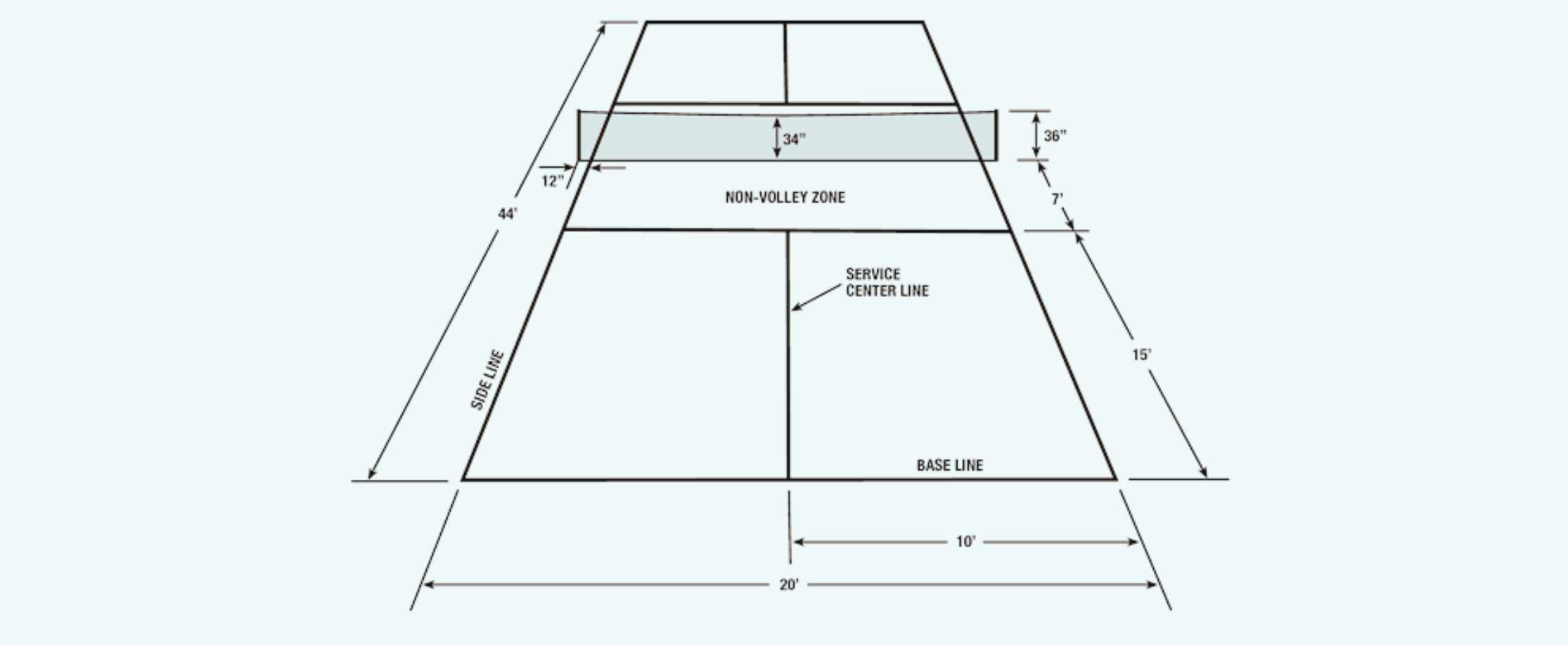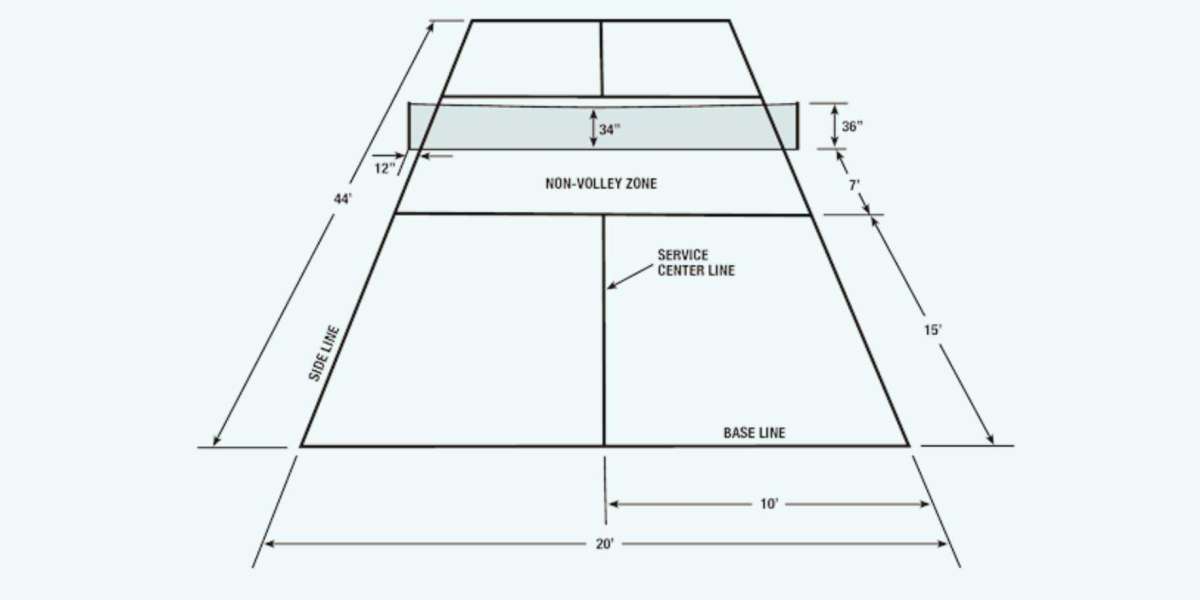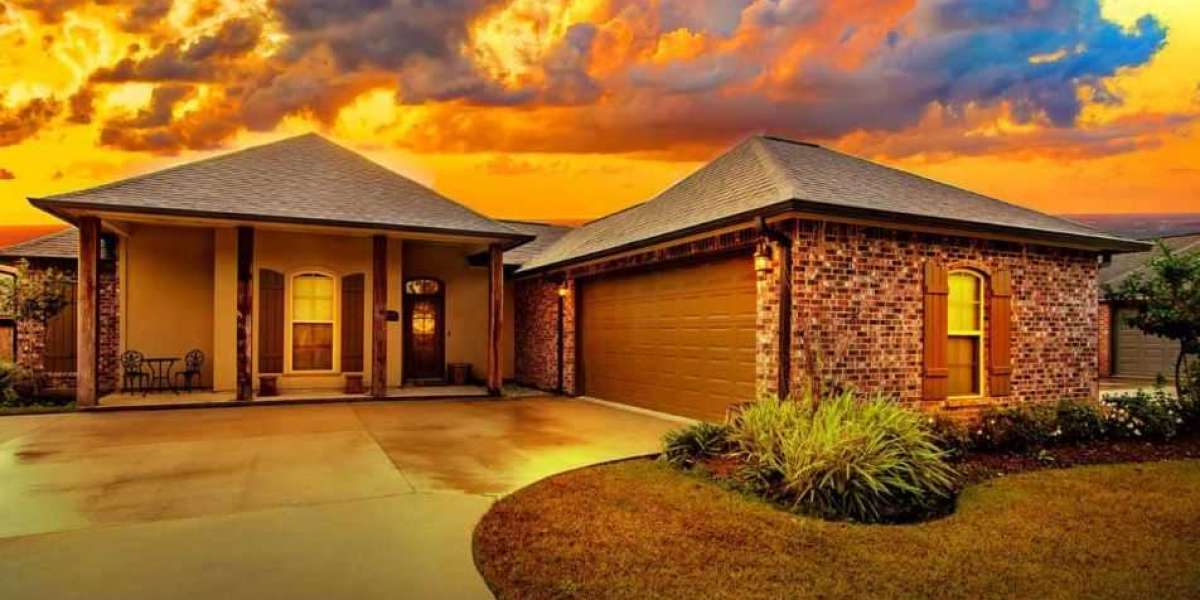Introduction
Pickleball has rapidly gained popularity as a fun and engaging sport that people of all ages can enjoy. Combining elements of tennis, badminton, and ping-pong, it offers a fantastic way to stay active and socialize with friends and family. If you are looking to set up your own pickleball court, it's essential to design it efficiently to maximize enjoyment and safety for players. In this article, we'll provide a comprehensive guide on creating the perfect pickleball layout.
1. Selecting the Right Location
The first step in creating a pickleball court is choosing the right location. Look for a flat and even surface with enough space to accommodate the court's dimensions. Ideally, the area should be at least 30 feet wide and 60 feet long to allow ample room for gameplay.

2. Understanding Court Dimensions
A standard pickleball court measures 20 feet wide and 44 feet long, divided into two equal halves by a 34-inch-high net at the center. Each half has two service courts, and there is a 7-foot non-volley zone, commonly known as the "kitchen," in front of the net.
3. Marking the Court
Once you've selected the location and understand the dimensions, it's time to mark the court. Use paint or tape to outline the boundaries and create a clear distinction between the playing area and the non-volley zone.
4. Installing the Net
A properly installed net is crucial for a successful pickleball court. Make sure the net is securely fastened at the correct height of 34 inches at the center and 36 inches at the posts.
5. Choosing the Right Surface
The playing surface is another essential aspect of a pickleball court. The most popular options include concrete, asphalt, and acrylic. Each surface has its pros and cons, so consider factors such as maintenance, cost, and player comfort before making a decision.
6. Providing Adequate Lighting
If you plan to play pickleball during the evening or in low-light conditions, installing proper lighting is essential. Adequate illumination ensures safe gameplay and extends the court's usability throughout the day.
7. Adding Surrounding Fencing
To prevent balls from rolling away and to maintain player safety, consider installing surrounding fencing around the court. Chain-link or mesh fences are popular choices for pickleball courts.
8. Creating Player Amenities
Enhance the playing experience by providing amenities like benches, shade structures, and water stations near the court. These amenities will make the court more inviting and comfortable for players.
9. Maintenance and Safety
Regular maintenance is vital to keep the court in top condition. Inspect the surface, net, and fencing regularly and make any necessary repairs promptly. Additionally, encourage players to warm up properly and follow safety guidelines to prevent injuries.
10. Building a Pickleball Community
A vibrant pickleball community can enhance the enjoyment of the sport and foster lasting friendships. Organize events, tournaments, and social gatherings to bring players together and grow the pickleball community.
Conclusion
Creating a pickleball layout is a rewarding endeavor that requires careful planning and attention to detail. By selecting the right location, understanding court dimensions, and providing essential amenities, you can build a fantastic pickleball court that will bring joy to countless players. Remember to promote safety and community spirit to make the court a hub for pickleball enthusiasts.
FAQs (Frequently Asked Questions)
What are the dimensions of a standard pickleball court? A standard pickleball court measures 20 feet wide and 44 feet long, with a 7-foot non-volley zone in front of the net.
What materials are best for the court surface? Popular choices for pickleball court surfaces include concrete, asphalt, and acrylic. Each material has its advantages, so consider factors like maintenance and player comfort.
How high should the net be positioned? The net should be 34 inches high at the center and 36 inches high at the posts.
Is lighting necessary for a pickleball court? If you plan to play during the evening or in low-light conditions, installing proper lighting is essential for safety and extended usability.
How can I build a pickleball community around the court? Organize events, tournaments, and social gatherings to bring players together, fostering a vibrant pickleball community.







